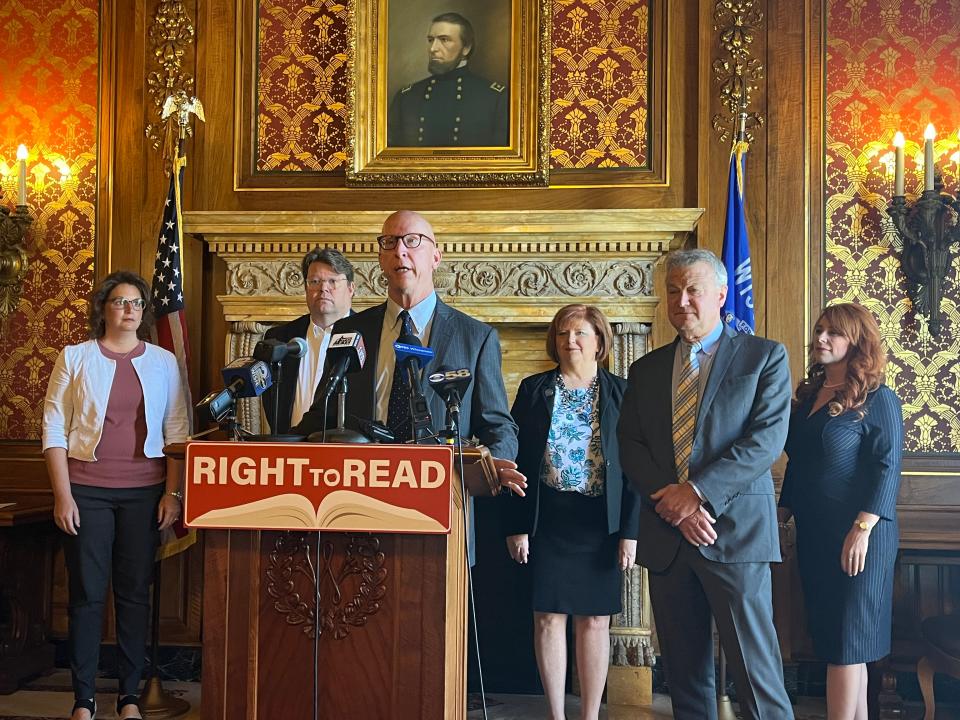What you need to know about how your kids will be taught reading in school
The question of how best to teach reading has been debated since at least the early 1900’s. Now with 32 states including Wisconsin legally mandating that it be taught one primary way, the educational stakes for our state’s children, families, teachers, and school administrators have never been higher. So providing some perspective on this approach known as the "Science of Reading" is warranted.
The historical perspective tells us that the debates began when the prevailing method of instruction first got called into question around 1910. That method involved the extensive sounding out of words or phonics. The pushback resulted in the Whole Word or Look-Say method which relied on word memorization instead. The once prevalent Dick and Jane series used this approach starting in the 1930’s.
The whole word approach held sway until 1955 when vigorously challenged in a work entitled "Why Johnny Can’t Read and What You Can Do About It." Subsequently the clashes have come and gone, but they intensified sharply in the 1960’s, the 1980’s, and the early 2000’s. The publication of various professional works at those times fueled these controversies. They included "Learning to Read: The Great Debate," "What’s Whole in Whole Language," a "Nation at Risk," the "Reading First implementation" studies, and the report of the "National Reading Panel" among others. Collectively these works gave rise to what is commonly referred to as the "Reading Wars," pitting phonics and wholistic methods against each other with the battle continuing to this day.
More: Gov. Tony Evers signs sweeping phonics-based reading bill into law
Over the years, the two sides have gone by different labels. On one hand, we have intensive, systematic, synthetic, structured, direct, and explicit phonics instruction. On the other, we have the look-say, whole language, and balanced literacy methods, with the latter two focusing much more on making meaning during reading. Various highly respected literacy experts have championed each approach at one time or another, while others believe that research has never crowned an undisputed winner.

Science of Reading approach based in phonics, but is broader
Today’s science of reading approach is notably broader than phonics, but retains a strong emphasis on sounding out words. It has gained significant traction with well-intentioned reporters, legislators, and parents, as well as a growing body of teachers and school administrators. Its branding frames the approach as having been proven scientifically through research including brain-based studies. That premise has compelled its advocates to regard the question of how best to teach reading as answered. However, even if we fully embrace the Science of Reading’s supportive body of research, the situation is still not entirely cut and dry, and it hinges on the notion of “serving all children.”
In my experience as a reading specialist and university literacy professor, I have both used phonics instruction successfully with a number of elementary school students and required the future teachers in my courses to know how to use that approach. Understanding the relationship between letters and sounds can contribute substantially to young readers’ ability to recognize unknown words. The Science of Reading stands on very solid ground here.
My experience has also taught me the importance of children being able to identify words by sight for fluent reading to occur, particularly words that occur frequently. Fluency is important, because choppy reading limits understanding. Likewise, using the context of a sentence to aid in word identification can have strategic value for children, as can recognizing root words and meaningful word parts. In fact, the best readers can deploy all of these strategies, not only to identify words, but to comprehend which is the ultimate goal of reading.

Not all children respond well to phonics instruction
Additionally, I’ve witnessed that not all children respond favorably to phonics instruction. Having an alphabet with 26 letters and an English language with 44 speech sounds makes sounding out some percentage of words difficult or even impossible. That doesn’t mean phonics instruction is necessarily ill-advised. It turns out that about 50% of English words can be sounded out entirely by knowing how letters and sounds regularly correspond to one another. Estimates suggest that another 35% or so can be sounded out within one sound, usually a vowel.
Regardless of the percentage of words that defy being sounded out, word recognition is difficult for children who struggle to tell the difference between similar speech sounds like short vowels. It is also difficult for those whose memory for sounds or their ability to blend them is weak. Some are simply incapable of mastering these foundational auditory skills. Even more generally, still other children just plain learn better visually, so more wholistic methods tend to work better for them.
One final caveat about phonics often goes unmentioned. Even if children successfully sound a word out, their comprehension will not benefit if the word isn’t one they already know in their oral language or if they can’t determine how it contributes to the meaning of the sentence.
The key takeaway here is that care must be taken so that the zeal for the Science of Reading, however well-justified, does not completely overshadow the need for alternative ways to teach children should phonics fail to do the trick. While phonics should rightfully play a role in the reading development of most children, it is not appropriate for all of them. In short, schools must be prepared to accommodate the learning needs of readers who require something different.
Years ago when first studying to be a teacher, I distinctly remember a literacy professor saying “There is no one best way to teach all children to read.” From my perspective, he had it right.
William Henk is the retired Dean of the College of Education at Marquette University.
This article originally appeared on Milwaukee Journal Sentinel: Sweeping reading bill signed into law by Gov. Evers last month.

